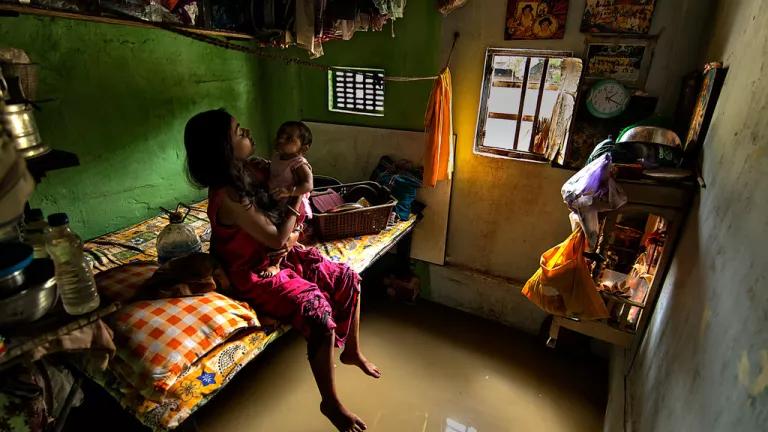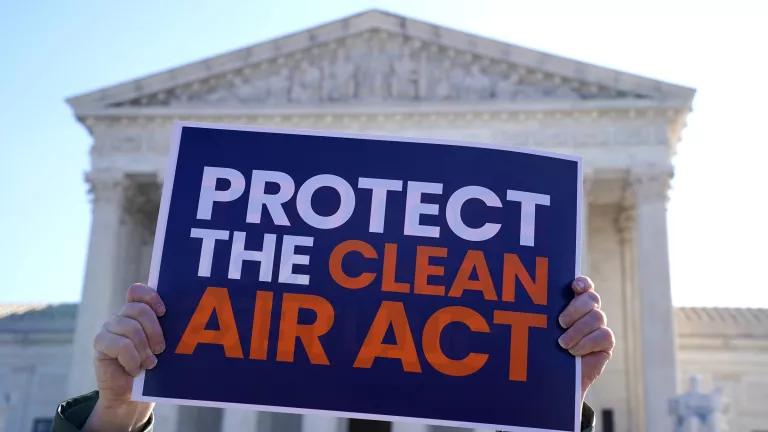July Was Hottest on Record—and Dangerous Heat Hits Home
Fueled by climate change, extreme heat is causing more hospitalizations—and even deaths—across the country.

A man on a subway platform in New York City during an extreme heat wave in July 2019
Fueled by climate change, extreme heat is causing more hospitalizations—and even deaths—across the country.
The heat is on. The summer of 2019 has been brutally hot around the world, from the United States to the Netherlands to Japan, and last month was the warmest recorded since reliable temperature recordkeeping began in 1880.
The science tells us that climate change is fueling more frequent, more intense, and longer heat waves worldwide. Extreme heat clearly isn’t just an inconvenience; exposure can have devastating impacts on our health. And it isn’t just theoretical—it is a present-day threat to well-being.
Teaming up with Clean Air Carolina, we are shining a spotlight on how extreme heat is harming Americans right now. Through a recent video created, we focused on heat impacts in North Carolina, a state that experiences about 10 dangerously hot days each summer. With unchecked climate change, that number could rise to 60 days every year.
It’s important to stay informed and well hydrated when high temperatures hit. People should always be on the lookout for the symptoms of heat exhaustion and heat stress. Two health professionals in North Carolina—Kathie Cox, a public health educator in Laurinburg, and Candace Cahoon, a pediatric asthma therapist in Ahoskie—shared their experiences with extreme heat in the video.
As pointed out in the video, extreme heat is taking a serious toll on the health of Americans right now—it’s the deadliest form of extreme weather in the United States. It is estimated that about 1,300 excess deaths each summer are caused by extreme heat exposure in the United States, and about 65,000 Americans have to go to the emergency room due to health problems related to extreme heat each year. Those health problems translate into an economic burden of millions of dollars due to direct treatment costs, lost wages from missed workdays, and the costs of medications and outpatient care—in addition to profound human suffering and significant disruption of daily life.

While extreme heat affects all of us in one way or another, its impacts hit certain vulnerable populations especially hard. Urban heat islands can heighten heat risks to people in cities. For those whose jobs require strenuous outdoor exertion, such as military members, agricultural workers, delivery workers, or construction workers, extreme heat exposure can be a dangerous occupational hazard. There are currently gaps in protections for workers related to extreme heat, but last month a bill was introduced in Congress to establish the first-ever federal safeguard specific to the health risks of heat.
Extreme heat also harms people with other serious health problems. New research shows that people living with kidney disease, diabetes, heart problems, and chronic obstructive pulmonary disease (COPD) are significantly more likely to be hospitalized—and more likely to die—after just a single day of exposure to extreme heat.
High temperatures are also known to worsen levels of dangerous air pollution, compounding respiratory and cardiovascular health risks. Inhaling dirty air triggers adverse health impacts in people with respiratory ailments like asthma and COPD. Ozone (smog) air pollution levels often spike on the hottest days, elevating risks for the 25 million Americans, including 6 million children, with asthma.
Extreme heat is a danger to our health, and it puts the most vulnerable among us at risk of real harm. We have to invest in improved community preparedness so that we can protect vulnerable populations and reduce the public health impacts of extreme heat. Heat adaptation projects can include solutions like heat action plans, community cooling centers, heat early-warning systems, cool roofs, and expanded green infrastructure.
The science is clear: Our extreme heat problems will only intensify if we fail to cut the carbon pollution that fuels dangerous climate change. It’s time to demand that our political leaders confront the climate crisis.




